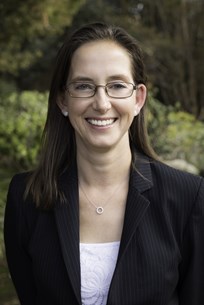Meeting
2016 Genitourinary Cancers Symposium

University of Southern California Norris Comprehensive Cancer Center, Los Angeles, CA
Tanya B. Dorff , Jeff Longmate , Susan G. Groshen , Walter Michael Stadler , Mayer N. Fishman , Ulka N. Vaishampayan , Jacek K. Pinski , Sumanta K. Pal , James Hu , David I. Quinn , Primo Lara Jr.
Background: Targeting the vascular endothelial growth factor (VEGF) pathway delays progression in mRCC, however innate and acquired resistance limit success. CD105 (endoglin) is a TGFb family receptor which is upregulated after VEGF inhibition, possibly mediating resistance. We studied serum CD105 and TGFb at baseline and after treatment, and tissue levels of TGFbR1 & 2 plus AVCRL, to discover biomarkers for treatment response as part of a randomized trial of bevacizumab (Bev) +/- the anti-endoglin antibody TRC105. Clinical data from the trial were presented at ASCO 2015 (Dorff et al, abstr 4542). Methods: Serum was collected at baseline and before cycles 2&4. ELISA was performed using kits from Abcam. Changes from baseline were evaluated and compared overall and between arms using a general linear mixed effects model. Immunohistochemistry was performed on paraffin embedded tissue samples using antibodies from R&D systems; tissue and baseline ELISA data were evaluated for association with PFS using Kaplan-Meier analysis and the logrank test. Results: 54 subjects (24 on Bev and 28 on Bev+TRC105) had at least one analyzed serum sample; 14 and 19 respectively had both baseline and cycle 2 samples. Mean CD105 was 82.8 (95%CI 64.6, 106.2) at baseline and 59.0 (95%CI 43.2, 80.7) at cycle 2; for 16 patients with cycle 4 data the mean was 39.8, significantly lower than baseline (p = 0.024), but not different between treatment arms. Cycle 2 TGFb levels were not different from baseline (p = 0.66) or between arms (p = 0.17). Baseline serum TGFb below the median ( < 10.6) was associated with higher likelihood of PFS at 12 and 24 weeks; (0.78 vs 0.3 and 0.49 vs 0.19, respectively, p = 0.022); baseline CD105 was not (p = 0.83). Tissue was available for 29 subjects. No tissue markers (TGFbR1 &2 or AVCRL) were associated with longer PFS except, in exploratory analysis, higher TGFbR2 staining in patients treated with TRC105 (p = 0.017). Conclusions: No pharmacodynamics markers for TRC105 therapy were identified. Lower baseline serum TGFb levels may be prognostic of PFS during Bev therapy, supporting the notion that this pathway contributes to resistance. Better PFS in TRC105-treated patients with higher tissue TGFbR2 expression warrants further study. Clinical trial information: NCT01727089
Disclaimer
This material on this page is ©2024 American Society of Clinical Oncology, all rights reserved. Licensing available upon request. For more information, please contact licensing@asco.org
2016 Genitourinary Cancers Symposium
Poster Session
Poster Session C: Renal Cell Cancer
Renal Cell Cancer
Renal Cell Cancer
NCT01727089
J Clin Oncol 34, 2016 (suppl 2S; abstr 522)
10.1200/jco.2016.34.2_suppl.522
522
E5
Abstract Disclosures
2024 ASCO Genitourinary Cancers Symposium
First Author: Neil J. Shah
2015 ASCO Annual Meeting
First Author: Tanya B. Dorff
2016 ASCO Annual Meeting
First Author: Neil S. Horowitz
2024 ASCO Gastrointestinal Cancers Symposium
First Author: Julian Walter Holch